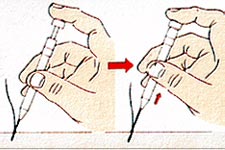Doctor can you please help me with this topic. A few days ago I had my first HT procedure for 4300 grafts. My Doctor told me that the hair under my ear is thinning therefore not leaving me with the best of donor hair. How is it possible that hair from the back is falling out?

 There are some inconsistencies in what you’ve told me. 4300 grafts in one surgery indicates that the donor area is very rich with hair and the densities are high. That is not consistent with problems in the donor area, which can be seen in diffuse unpatterned alopecia (DUPA), for example. People with DUPA never can get yields like you have received. When I learn of a single procedure of 4300 grafts, I assume one or more of the following:
There are some inconsistencies in what you’ve told me. 4300 grafts in one surgery indicates that the donor area is very rich with hair and the densities are high. That is not consistent with problems in the donor area, which can be seen in diffuse unpatterned alopecia (DUPA), for example. People with DUPA never can get yields like you have received. When I learn of a single procedure of 4300 grafts, I assume one or more of the following:
- Very high densities
- Loose scalp
- Grafts cut down into one hair grafts — which means in normal densities, you got about 2300 grafts (and paid more money for less actual grafts)
- Doctor who is dishonest and lied about the numbers to rip the patient off
That last item is far more common than I would want to see. The times that I get 4300 grafts (usually over 9,000 hairs) from a donor site (without cutting the grafts into 1-hair grafts) are substantially less than 5% of all patients. As the originator of the megasession, I feel this makes me an expert on the subject.
Poor donor hair under the ears almost always reflects upon donor hair in the back of the head to some degree. The existence of a poor donor supply on the sides of your donor area should be similar to the hair in the back of your donor supply and as such, 4300 grafts just does not calculate in my book. I wrote the original articles in the medical literature dating back to 1993 on this very subject (see NHI Medical Publications).
For your sake, my fingers are crossed that your grafts grow in nicely and you got the 4300 grafts you paid for… and I am hopeful that you did not get screwed.


 It sounds like the team used the Choi Implanter, which is as instrument that makes the recipient site and puts in the hair at the time the instrument is withdrawn (see image at right). It requires proper insertion of the graft into the instrument and it takes considerable dexterity to do this. These instruments are used throughout Asia and Europe, and in the hands of many doctors, the grafts often do not grow for a number of reasons, including:
It sounds like the team used the Choi Implanter, which is as instrument that makes the recipient site and puts in the hair at the time the instrument is withdrawn (see image at right). It requires proper insertion of the graft into the instrument and it takes considerable dexterity to do this. These instruments are used throughout Asia and Europe, and in the hands of many doctors, the grafts often do not grow for a number of reasons, including: